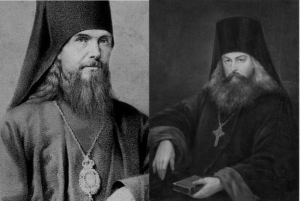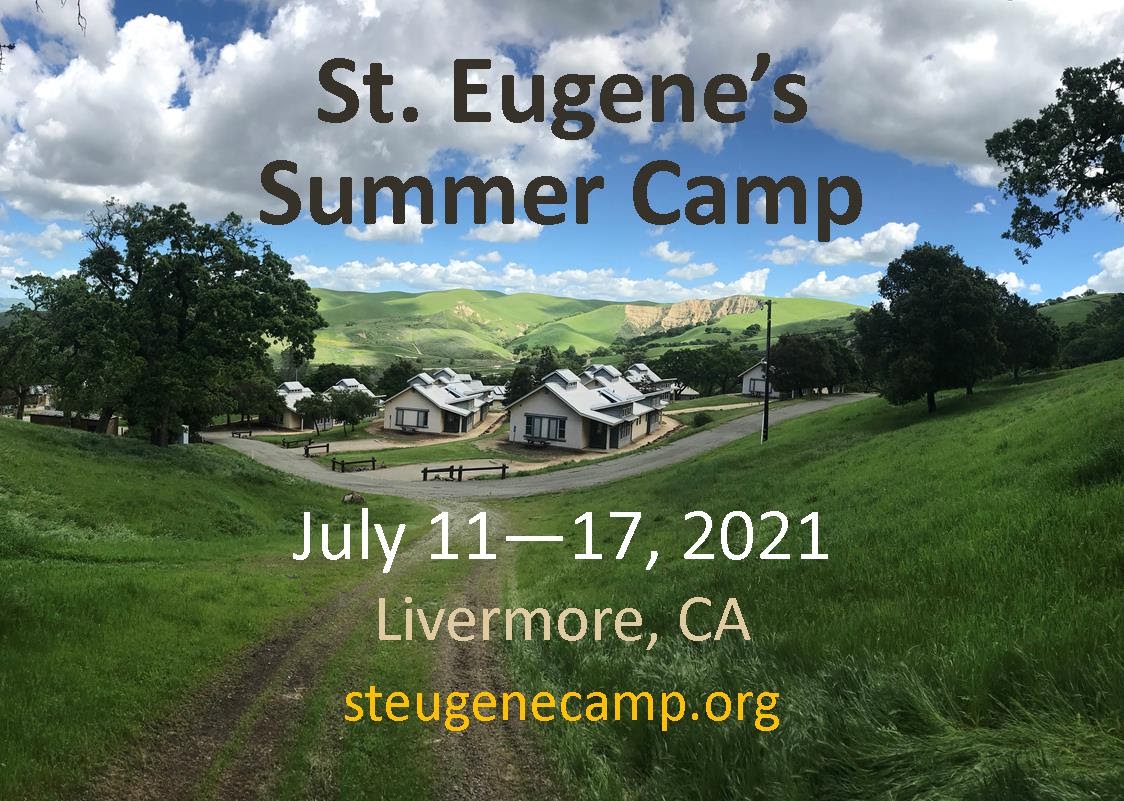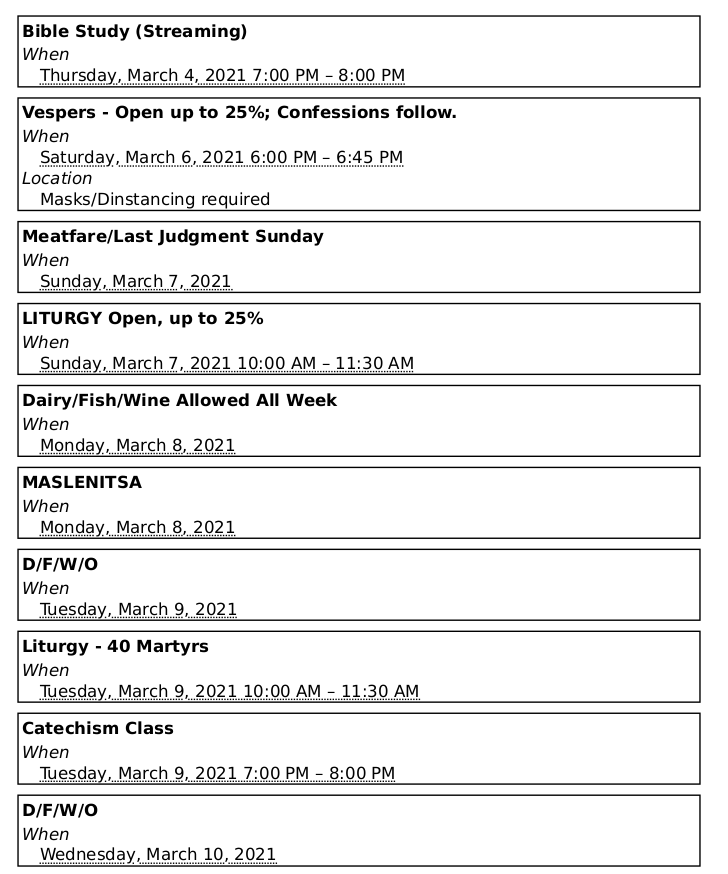
Focus on the Faith: The Fourth of July
The Fourth of July is always a time for celebration in our land. It is a chance for family and friends to gather together for barbecues, outdoor activities, and fireworks. On Independence Day, the cause of our celebration is freedom, freedom from a cruel, repressive government, and freedom from a tyrannical king. This freedom is not only about liberation “from,” but also liberation “to.” It means freedom to chart our own course, to work for our own goals, and to reap the fruits of our own labors.
It is common practice in our churches to offer a Prayer Service, a Molieben of Thanksgiving on the “Glorious Fourth,” but here, in the Pacific Central Deanery, it has been our custom for nearly 100 years to make a pilgrimage to Fort Ross and offer the Divine Liturgy there at the chapel in thanksgiving to God for this wonderful country of ours. This year we will celebrate it on July 5, Monday, the official day set aside by the US government. Also it is a holy pilgrimage site because St. Innocent visited here, and perhaps even the youth-martyr Peter the Aleut. Please make an effort to participate!
While this civil holiday may not be found on our ecclesiastical calendars, we can certainly derive some spiritual food from it, right along with our festive foods and ice-cold beverages! The Fourth of July can be an opportunity for us to recall that there is a spiritual struggle for independence that goes on in our lives, and in our hearts, every single day. The tyrannical king is the devil; his cruel government is this fallen world and death; the overwhelming tax burdens and the tax collectors are our sins along with the demons who wait in the aerial toll-houses to accuse us at our death. These are the same demons, who would love nothing more than to find seven buddies, kick the Heavenly King out of our hearts, and replace Him with themselves, as we heard about in the Gospel.
Nothing is better, nothing is more natural to human beings than spiritual freedom. The Lord Jesus Christ said: “If the Son (of God) therefore shall make you free, ye shall be free indeed” (John 8:36.) But in order to gain this freedom, this freedom which is only found in Christ, there needs to be a revolution, a revolution in us! Now the word “revolution” literally means to turn around. Isn’t that what repentance is? A turning around? A change of direction? A change of mind? Repentance is a spiritual struggle to turn, a spiritual revolutionary war against the tyranny of evil. Repentance is a noetic rebellion and an ascetic strategy of separation that employs spiritual armaments given to us by the grace of God. St Paul wrote to the Corinthians: “For though we walk in the flesh, we do not war after the flesh: For the weapons of our warfare are not fleshly, but our weapons have Divine power to pull down strongholds; casting down vain imaginations, and every high thing that exalts itself against the knowledge of God, and brings into captivity every thought to the obedience of Christ” (2 Corinthians 10:3-5.)
So, then, the Fourth of July can serve as a good reminder to us that we need to keep up the struggle and “Fight the good fight of faith” (1 Tim. 6:12.) It’s only when we let our guard down, relax our efforts and our resolve, that we find ourselves slipping back into the clutches of our Adversary, the King of wickedness, and falling into the tyranny of his cruel and oppressive government.
Stand fast therefore” (says St. Paul) “in the liberty wherewith Christ hath made us free, and be not entangled again with the yoke of bondage” (Galatians 5:1.)
Lives of Saints
John (Maximovitch) the Wonderworker
Our father among the saints John (Maximovitch), Archbishop of Shanghai and San Francisco (1896-1966), was a diocesan bishop of the Russian Orthodox Church Outside Russia (ROCOR) who served widely from China to France to the United States. He departed this life on June 19 (O.S.) / July 2 (N.S.), 1966, and was officially glorified by the Russian Orthodox Church Abroad on July 2, 1994. His glorification was later recognized for universal veneration by the Patriarchate of Moscow on July 2, 2008.
The future St. John was born on June 4, 1896, in the southern Russian village (current day Ukraine) of Adamovka in Kharkov province to pious aristocrats, Boris and Glafira Maximovitch. He was given the baptismal name of Michael, after the Holy Archangel Michael. In his youth, Michael was sickly and had a poor appetite, but he displayed an intense religious interest. He was educated at the Poltava Military School (1907-14), Kharkiv Imperial University, from which he received a law degree (in 1918), and the University of Belgrade (where he completed his theological education in 1925). He and his family fled their country as the Bolshevik revolutionaries descended on the country, emigrating to Yugoslavia. There, he enrolled in the Department of Theology of the University of Belgrade. He was tonsured a monk in 1926 by Metropolitan Anthony (Khrapovitsky) of Kharkov (later the first primate of the Russian Orthodox Church Outside of Russia). Metropolitan Anthony later in 1926 ordained him hierodeacon. Bishop Gabriel of Chelyabinsk ordained him hieromonk on November 21, 1926. Subsequent to his ordination he began an active life of teaching in a Serbian high school and serving, at the request of local Greeks and Macedonians, in the Greek language. With the growth of his popularity, the bishops of the Russian Church Aboard resolved to elevate him to the episcopate.
Hieromonk John was consecrated bishop on May 28, 1934, with Metropolitan Anthony serving as principal consecrator, after which he was assigned to the Diocese of Shanghai. Twelve years later he was named Archbishop of China. Upon his arrival in Shanghai, Bp. John began working to restore unity among the various Orthodox nationalities. In time, he worked to build a large cathedral church that was dedicated to the Surety of Sinners Icon to the Mother of God, with a bell tower and large parish house. Additionally, he inspired many activities: the building churches, hospitals, and orphanages in Shanghai. He was intensely active, constantly praying and serving the daily cycle of services, while also visiting the sick with the Holy Gifts. He often would walk barefooted even in the coldest days. Yet to avoid the appearance of secular glory, he would pretend to act the fool. He gave generously to the needy and served the poor without a thought for his own needs.
With the end of World War II and the coming to power of the Communists in China, Bishop John led the exodus of his community from Shanghai in 1949. Initially, he helped some 5,000 refugees to a camp on the island of Tubabao in the Philippines, while he travelled successfully to Washington, D.C., to lobby for amending the law to allow these refugees to enter the United States. It was while on this trip that Bishop John took time to establish a parish in Washington dedicated to St. John the Forerunner.
In 1951, Archbishop John was assigned to the Archdiocese of Western Europe with his cathedra in Paris. During his time there, he also served as archpastor of the Orthodox Church of France, whose restored Gallican liturgy he studied and then celebrated. He was the principal consecrator of the Orthodox Church of France's first modern bishop, Jean-Nectaire (Kovalevsky) of Saint-Denis, and ordained to the priesthood the man who would become its second bishop, Germain (Bertrand-Hardy) of Saint-Denis.
In 1962, Archbishop John was assigned to the Diocese of San Francisco, succeeding his longtime friend Archbishop Tikhon. Archbishop John's days in San Francisco were to prove sorrowful as he attempted to heal the great disunity in his community. He was able to bring peace such that the new cathedral, dedicated to the Joy of all Who Sorrow Icon of the Mother of God, was completed.
Deeply revering St. John of Kronstadt, Archbishop John played an active role in the preparation for his canonization.
He reposed during a visit to Seattle on July 2, 1966, while accompanying a tour of the Kursk-Root Icon of the Mother of God. He was laid to rest in a crypt chapel under the main altar of the new cathedral until his canonization, when his relics were placed in the nave.
Quotes from the Fathers: On Freedom
“Some people, by the word freedom, understand it to mean the ability to do whatever one wants … People who have allowed themselves to become slaves of sins, passions, and defilements more often than others appear as zealots of external freedom, wanting to broaden the laws as much as possible. But such a man uses external freedom only to more severely burden himself with inner slavery. True freedom is the active ability of a man, who is not enslaved to sin, who is not pricked by a condemning conscience, to choose the better in the light of God’s truth, and to bring it into actuality with the help of the gracious power of God. This is the freedom from which neither heaven nor earth are restricted.” (St. Philaret of Moscow, Sermon on the Birthday of Emperor Nicholas I, 1851)
“In truth there is only one freedom – the holy freedom of Christ, whereby He freed us from sin, from evil, from the devil. It binds us to God. All other freedoms are illusory, false, that is to say, they are all, in fact, slavery.” (St. Justin Popovich, Ascetical and Theological Chapters, II.36)
Orthopraxis: Vacation
SPIRITUAL HEALTH WARNING. . .
Taking a vacation from God over the summer (or anytime, really) is hazardous to your spiritual health!
“Summertime, and the livin’ is easy,” sings Clare in George Gershwin’s “Porgy and Bess.” As the weather warms up, our brains begin to melt and our thoughts fixate on vacation, relaxation, and the “laying aside of all earthly cares.” The problem with this fixation is that we sometimes listen to that “moneychanger of the mind” who encourages us to “lay aside” all spiritual cares as well! It’s an established fact that church attendance plummets in the summer months – not just here at St. Nicholas, but universally. Folks forget to “plan” about “church” in the midst of all their other summertime plans, (about which they are very careful indeed!) But our church attendance, our church giving, our prayer life, our Scripture reading, all of these should also be taken into account as we prepare for our hiatus from work, school, from town, etc.
Like all of life, our spiritual life is lived in a certain rhythm. Over the Church year, with all of its fasts and feasts, a certain momentum is developed in our souls. This momentum is a result of the active presence of the Holy Spirit in us — guiding our decisions, nourishing our souls, and leading us to a personal communion with our Lord Jesus Christ. However, if this momentum is not kept up, all that we have gained begins to get lost. The Christian life is often compared to a spiritual ladder which all of us must climb if we desire to see Christ. I would like to suggest that the Christian life is more like a “descending” escalator which we must “ascend.” Making progress is difficult, but not impossible, because we are aided by the power of God. But as soon as we stop climbing, we immediately begin a rapid descent backwards, down to the very bottom. As a parish priest, I have sadly seen more people than I would like to count who had grown greatly over the winter and spring seasons of the Church year, only to fall right back to square one because they took “time off” from church over the summer. The result of their “breather” was a loss of this Spirit-driven momentum. Like a muscle, when our souls are left inactive they atrophy.
So, if you are going away this summer, go online and find where there may be Orthodox churches near where you will be. If you need help with this, feel free to ask me for assistance. Are you going to Antarctica? No worries! Holy Trinity Russian Orthodox Church is there for you! If you are going out to the wilderness, or a remote cabin or on a camping trip, take along a Bible and a prayer book; read the prayers and services and celebrate the glory of nature with its Creator. Every day is a “day that the Lord has made”. Every season, every moment of our lives is a gift from God. Any time is a good time to spend with the Lord.
Upcoming Events
Upcoming events this month are in the attached PDF calendar (Events are subject to change! see the online calendar for updates or the attached PDF for more info).





